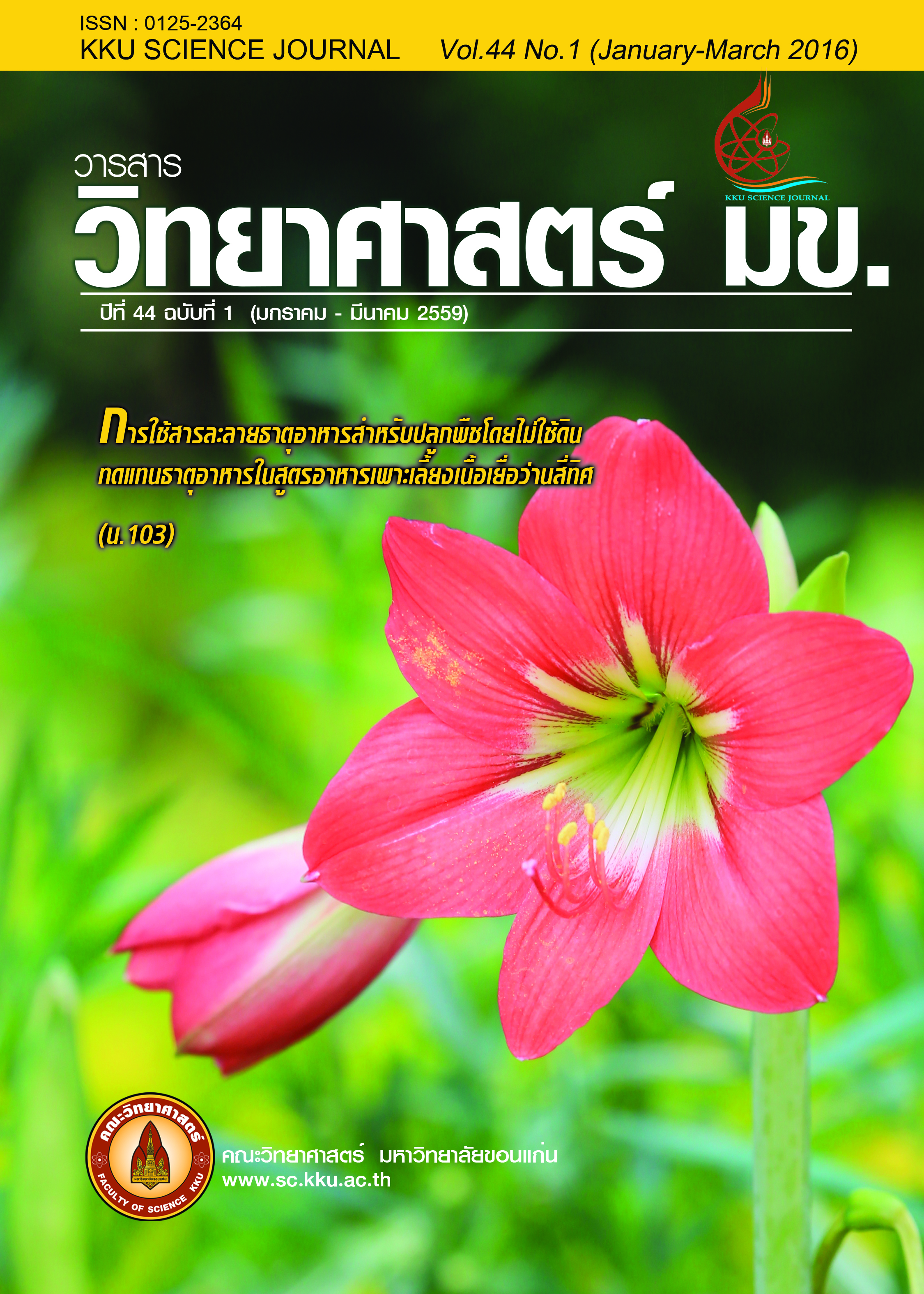Cytotoxic Alkaloids from the Root Bark of Zanthoxylum rhetsa
Main Article Content
Abstract
Eight known alkaloids were isolated from the root barks of Zanthoxylum rhetsa. Based on the spectroscopic data analysis and the comparison with previous spectral of reported alkaloids, their structures were established as dihydroavicine (1), dihydronitidine (2),
paraensidimerine C (3), N-methylflindersine (4), 8-acetonyldihydroavicine (5), paraensidimerine A (6), 8-acetonyldihydronitidine (7), and akimmianine (8). Among them, alkaloids 3-6 were obtained for the first time from this plant. The cytotoxic evaluation of these alkaloids toward three cancer cell lines, epidermoid carcinoma of oral cavity (KB), breast adenocarcinoma (MCF-7) and small cell lung cancer (NCI-H187) found that monomeric quinolinone alkaloid 4 exhibited effective cytotoxicity against NCI-H187 (IC50 0.536 μg/mL) and KB (IC50 25.16 μg/mL) cells. Among benzophenanthridine alkaloids, compound 7 was proved to be more potent as an
anticancer agent to all cancer cell lines and was approximately 126 folds greater than that of the standard drug ellipticine (IC50 3.14 μg/mL) to NCI-H187. The presented results demonstrate that alkaloids 4 and 7 can be recommended as appropriate lead structures for the design and synthesis of their analogs to improve efficacy.
Article Details

This work is licensed under a Creative Commons Attribution-NonCommercial-NoDerivatives 4.0 International License.


